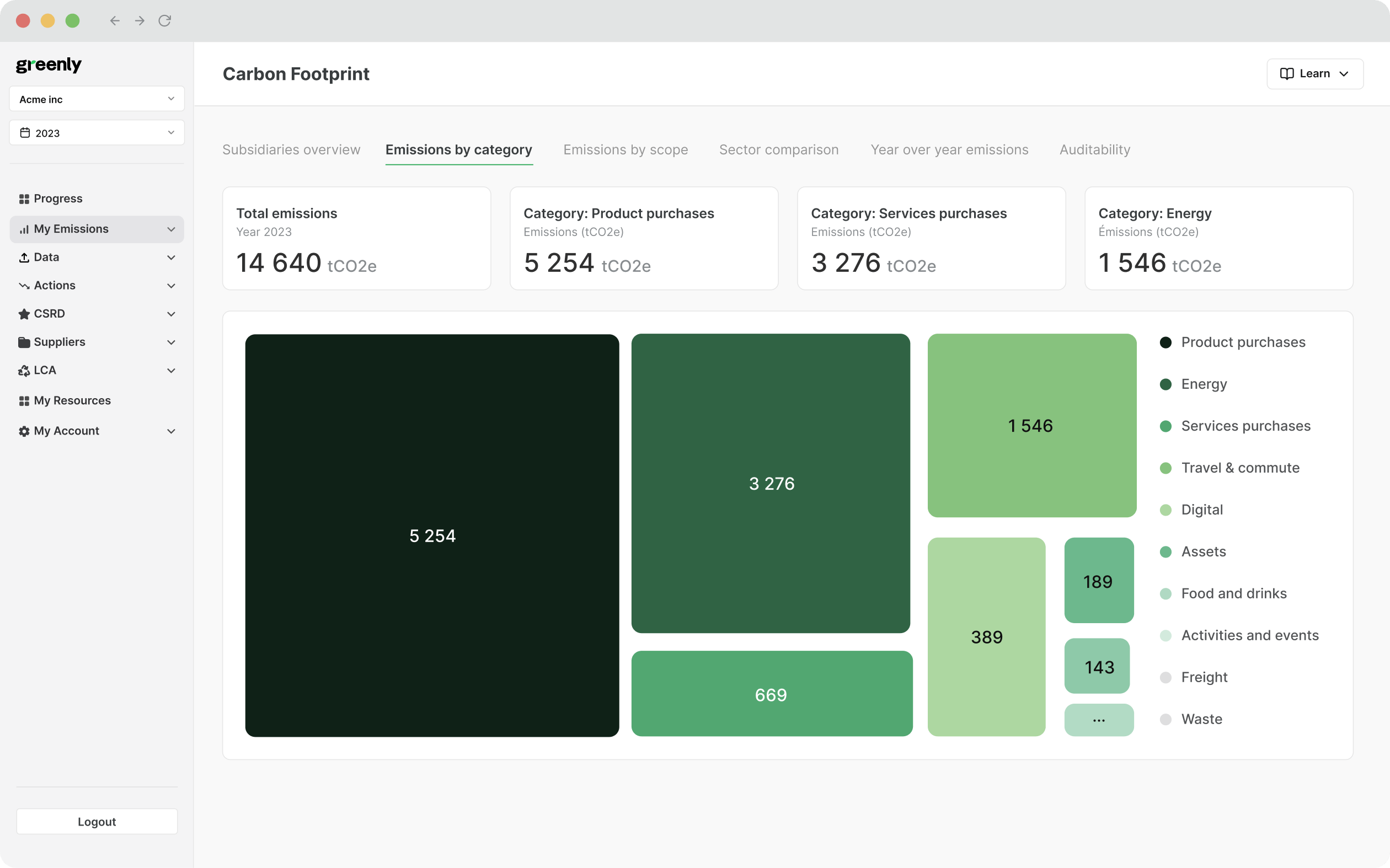ESG / CSR
Industries
Why is Climate Change Increasing the Threat of Tsunamis?
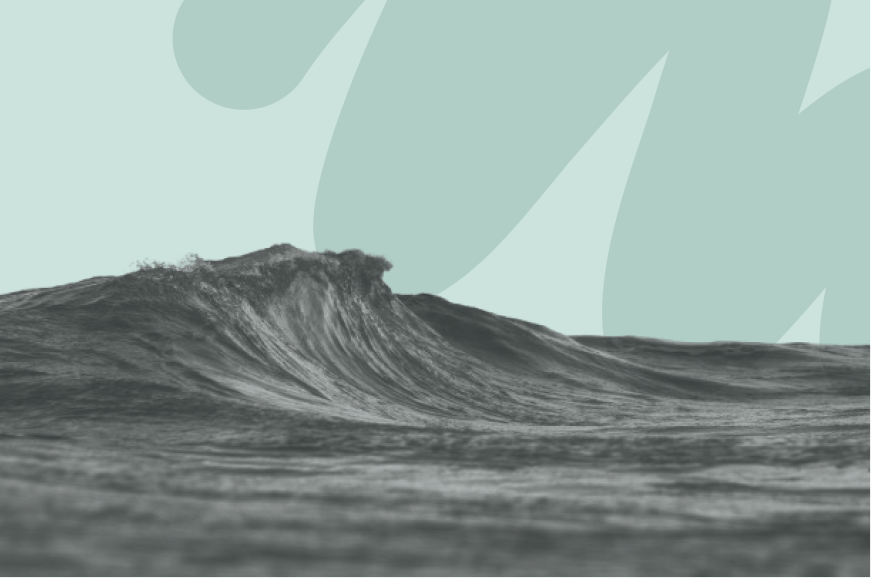


Key Topics You’ll Learn About in This Article
Overview of the creation of a tsunami and their repercussions
How tsunamis are different from hurricanes or earthquakes
The relationship between tsunamis and climate change
From tornadoes, hurricanes, flooding, droughts, and earthquakes – it’s hard to remember that even tsunamis can be added to the long list of natural disasters and weather patterns that are negatively impacted by climate change.
Tsunami waves, also known as a seismic sea wave, can elicit devastating tsunamis that can prove as detrimental as other natural disasters and effect entire ocean basins. Therefore, an official tsunami warning will often be issued via tsunami warning centers.
In this article, we’ll explore what tsunamis are, how they impact coast areas, how they are different from other natural disasters, and how fighting against climate change could alter the trajectory for future tsunamis.
What Are Tsunamis?
Tsunamis refer to a series of large ocean waves that are usually caused by massive disturbances in large bodies of water: such as by the deep ocean floor and seas part of the Pacific Ocean.
Often, these disturbances which generate tsunamis can be triggered by:
Earthquakes
Earthquakes that occur near or beneath the ocean — such as in Japan or California’s Bay Area — can displace large volumes of water, triggering tsunamis.
Underwater Landslides
Sudden shifts of sediment or rock beneath the ocean floor can rapidly displace seawater, generating destructive waves.
Volcanic Eruptions
Explosive eruptions or volcanic collapses beneath the sea can cause powerful shockwaves that displace ocean water.
Landslides into Water
Large amounts of debris falling into oceans or lakes — from cliffs or mountainsides — can generate waves similar to tsunamis.
It isn’t unusual for people to refer to tsunamis as a, “tidal wave” – but this is incorrect, seeing as tsunamis are not caused by tides. In fact, tsunamis are dissimilar to the ocean waves we are used to – seeing as tsunamis don’t “fall apart” the way that a surfer or swimmer would feel in an ocean.
Seismic tsunamis are also different from regular ocean waves as:
- Tsunamis have longer wavelengths, meaning they travel at higher speeds without losing energy
- Tsunamis are not noticeable in the open ocean, but can become visibly alarming once they reach the shore. The opposite is true for ocean waves, which usually appear calm once they hit the sand.
- Tsunamis have higher speeds than ocean waves – up to 500-600 miles (800-1000 kilometers) per hour
- Tsunamis will grow taller once they reach shallow coastal areas, unlike ocean waves that will usually “die” by this point.
The battle cards below will further breakdown how tsunamis are different from regular ocean waves:
Tsunamis usually occur in the Pacific Ocean, making areas such as Japan, Alaska, Australia, Chile, and the Philippines most vulnerable to tsunamis. As a result of this tsunami hazard zone, the Pacific Tsunami Warning Center was developed and is based in Honolulu, Hawaii and works to help residents avoid large tsunami risk as well as to issue natural tsunami warnings.
Tsunamis embody multiple waves that flee to the shore and act as a fast rising tide. This is caused by the underwater disturbance. Once a tsunami has reached the shore, it turns into a speedy tide that moves inland – eventually invading buildings, residences, and coastal communities.
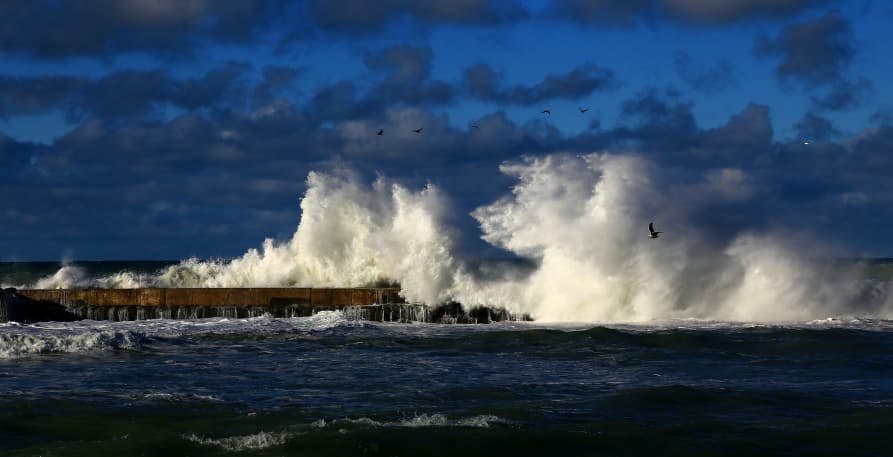
How Do Tsunamis Affect Society?
Tsunamis, just like other natural disasters, can cause catastrophic damage once they hit the coast – as they prey on low-lying residences, impact infrastructure, and can even result in death.
As a result, local tsunamis impact our social surroundings, infrastructure, the economy, and our environment.
Social Impact of a Tsunami Warning
Tsunamis impact our social environment by:
Taking Lives
Tsunamis are among the deadliest natural disasters, often leading to significant loss of life in coastal areas.
Land Inundation
Flooding from tsunamis can cancel both essential and recreational activities, disrupting entire communities.
Loss of Homes
Powerful waves and coastal erosion can destroy houses and displace families from coastal communities.
Eco-Anxiety
Tsunamis and other environmental threats can heighten emotional stress and eco-anxiety among affected populations.
How Seismic Ocean Floor Activity Impacts Infrastructure
Tsunamis impact our infrastructure by:
- Causing damage to coastal infrastructure imperative to the global economy ports, boats, and other businesses
- Destruction of essential buildings such as homes, schools, and businesses destruction of buildings and infrastructure
Economic Impact of Tsunamis
Tsunamis impact the economy by:
- Preventing fisheries, tourism, and shipping freight cargo on boats due to tsunamis impacting the functionality of coastal ports
- Ruining agricultural land and otherwise viable crops to be harvested
Environmental Impact of Tsunami Waves
Tsunamis impact our environment by:
- Forcing both marine life and animals on land to relocate in the midst of underwater disruptions that cause tsunamis
- Deterioration of ecosystems as a result of land inundation
Various marine environment changes that can impact ecosystems, biodiversity, and ultimately climate change
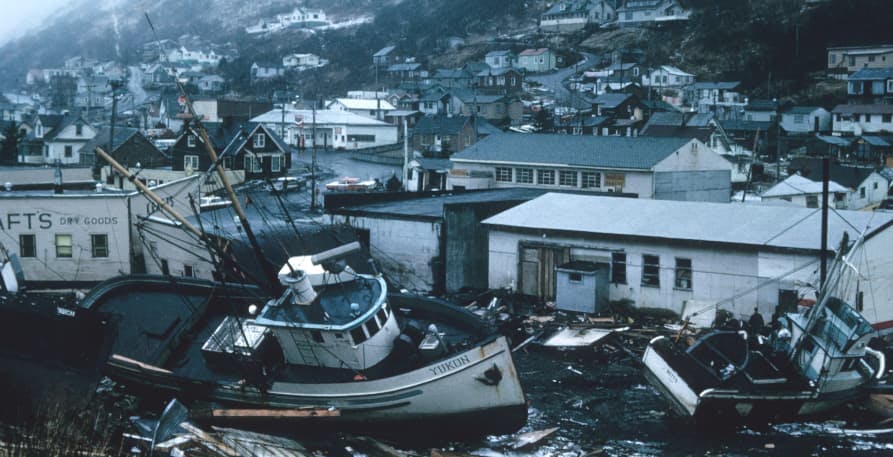
How Can You Prepare for Tsunamis?
Since tsunamis are not as well known or likely as other natural disasters, the unawareness on the importance of tsunami preparedness is often the biggest culprit to the mass destruction of property and lives lost.
Unlike other natural disasters that can be predicted (such as hurricanes and tornadoes), tsunamis are more like earthquakes as in they could happen at any moment without warning. In general, if you can already see a tsunami on the rise in the distance – outrunning it isn’t possible.
Therefore, implementing early warning systems and seeking to educate those living in areas vulnerable to tsunamis on preparedness measures is imperative to help reduce the impact of tsunamis on society.
However, if you can already see a tsunami or feel the ground shaking – it is important to seek high ground and avoid the coast until authorities have declared the tsunami to be over. This high ground should have adequate shelter as a tsunami could last for days.
You can further protect yourself from tsunamis by:
- Educating yourself on tsunami warnings and sign up to receive tsunami warning alerts
- Making an emergency plan to communicate with family and friends in the event of an evacuation
- Mapping out potential escape routes from places you go to everyday (work, school, etc.)
- Creating an evacuation plan by foot in the event roads are damaged
- Keeping a disaster supply kit handy
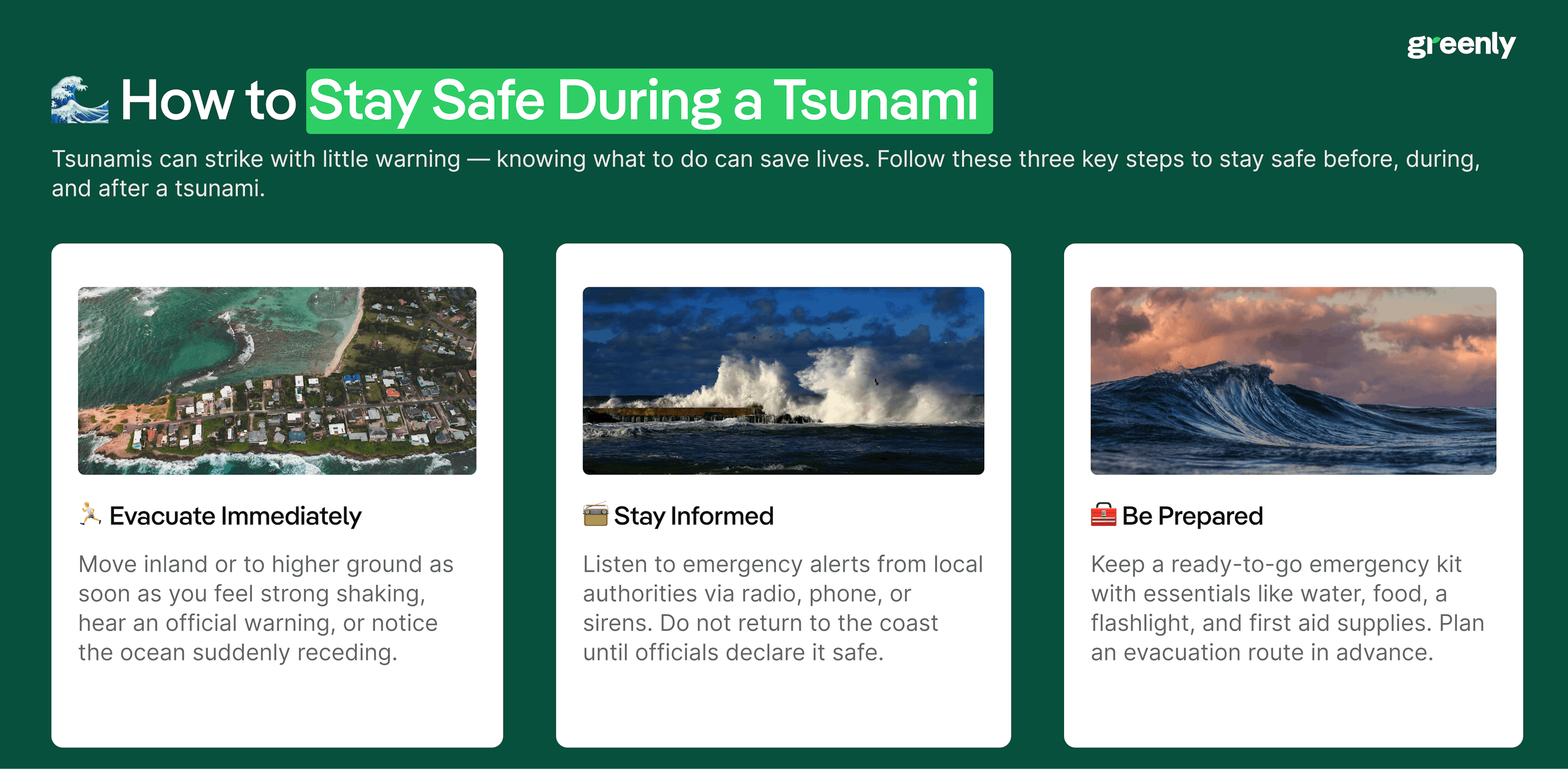

What Makes Tsunamis Different from Hurricanes and Other Natural Disasters?
People often associate tsunamis with hurricanes seeing as much of their damage is caused by water, whether it be a combination of strong winds, flooding, or precipitation – but the two natural disasters aren’t as alike as everyone thinks.
Here is a breakdown of how tsunamis are not the same as hurricanes:
How It Happens
Tsunamis happen as a result of activity occurring below the earth – such as underwater earthquakes, volcanic activity, or landslides. However, hurricanes are caused by tropical cyclones that develop above warm ocean waters and are influenced by atmospheric conditions and weather patterns. Ultimately, tsunamis occur from underground activity and hurricanes from atmospheric conditions – making their roots of origin completely different.
The Nature of the Disaster
Tsunamis are known for their wavelengths and don’t need strong wind or precipitation to cause damage, whereas hurricanes are more similar to a full-on storm – where damage is caused by water in combination with strong winds and heavy precipitation.
Tsunamis do not need external weather factors to provoke more damage the way that hurricanes do.
The summary cards below will further reveal how tsunamis are different from tornadoes, earthquakes, and hurricanes:
Affected Areas by Geography
Both tsunamis and hurricanes remain most vulnerable to coastal communities. However, tsunamis can travel further distances than hurricanes can – eliciting more damage inland than a hurricane will. This is because hurricanes travel by wind and affect coast regions in their “flight” paths.
Warning Tactics
Tsunamis, unlike hurricanes, cannot be predicted as it is difficult to monitor underwater seismic activity. Therefore, hurricanes have the upper hand over tsunamis – as they can be tracked days beforehand and allow people time to prepare for evacuation if necessary.
Overall Impact
Both tsunamis and hurricanes can cause extreme destruction, especially in coastal areas – but hurricanes are usually prone to cause more extensive damage due to the fact hurricanes act in combination with strong winds and heavy precipitation. This results in more flooding and infrastructure issues than tsunamis usually have the power to cause.
| Category | Tsunamis | Hurricanes |
|---|---|---|
| How It Happens | Result from underwater earthquakes, volcanic activity, or landslides. | Caused by tropical cyclones developing above warm ocean waters and influenced by atmospheric conditions and weather patterns. |
| The Nature of the Disaster | Characterised by long wavelengths and do not require strong wind or precipitation to cause damage. | Resemble full-on storms with damage caused by water, strong winds, and heavy precipitation. |
| Affected Areas by Geography | Primarily impact coastal communities but can travel further inland than hurricanes. | Impact coastal regions in their path and are less capable of traveling far inland. |
| Warning Tactics | Cannot be predicted easily due to the difficulty in monitoring underwater seismic activity. | Can be tracked days in advance, allowing for preparation and evacuation. |
| Overall Impact | Cause significant destruction, particularly in coastal areas, but typically result in less extensive flooding and infrastructure damage compared to hurricanes. | Cause extensive damage due to the combination of strong winds, heavy precipitation, and resulting flooding. |

How Does Climate Change Increase the Chances of Tsunamis?
Not all natural disasters are influenced by climate change, but tsunamis sure are.
There are many scientific explanations as to how climate change can aggravate tsunamis to be even worse for the economy, society, and the environment. For instance, the biggest threat to tsunamis are rising sea levels – which are being aggravated by climate change. The reason that rising sea levels can make tsunamis even worse than they already are is because higher sea levels can allow for tsunamis to travel further inland and cause even more damage.
In addition to this, rising sea levels result in more vulnerable coastlines – which make these coastal communities even more vulnerable to an incoming tsunami as the natural buffer to absorb the energy of an incoming tsunami will cease to exist.
The vertical timeline below will reveal how rising sea levels could further contribute to tsunamis:
1. Rising Sea Temperatures 🌡️
As global temperatures climb, ocean waters expand and warm, causing glaciers and ice sheets to melt — steadily increasing sea levels worldwide.
2. Coastal Vulnerability 🏝️
Higher sea levels bring coastlines closer to flood thresholds, reducing the distance and elevation that once buffered coastal communities from tsunami waves.
3. Amplified Tsunami Impact 🌊
When tsunamis occur, elevated sea levels allow waves to travel farther inland, submerging larger areas, increasing property damage, and endangering more lives.
4. Erosion & Habitat Loss 🏚️
Persistent sea rise weakens natural barriers like dunes and mangroves, which once absorbed tsunami energy — leaving coastal regions more exposed to devastation.
5. Long-Term Risk Escalation 📈
As both sea levels and extreme weather events continue to rise, the combined threat increases the frequency and severity of tsunami-related flooding worldwide.
Think of when an ocean wave finally reaches your feet – it’s a lot calmer than when it was still active out in the deep waters of the ocean, right? Rising sea levels will cause approaching waves to the shore to be more erratic, and can impact the severity of tsunamis with a greater risk of coastal inundation.
Also, it has been theorised that ocean warming, caused by climate change, can impact the tectonic plates that rest below large bodies of water. Ultimately, this can result in more geological activities and in turn – worse tsunamis. Climate change has also affected ocean patterns, which could eventually lead to tsunamis distributing themselves across the ocean and impacting other areas of the world.
The bottom line is that climate change has a direct impact on tsunamis, and the more that climate change worsens – the more likely it is that tsunamis will, too.
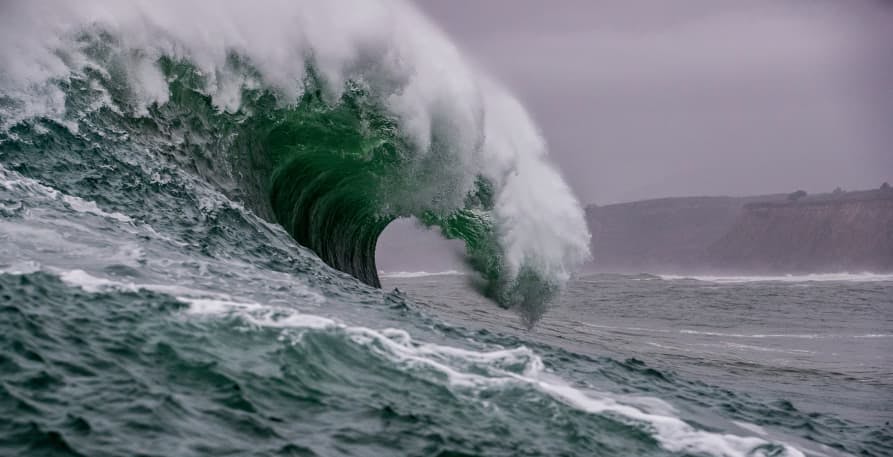
Can Fighting Against Climate Change Help to Reduce the Chances of Future Tsunamis?
Given that climate change has created undesirable circumstances that have allowed tsunamis to grow stronger and more dangerous to both people and the planet, it is probable that fighting against climate change could help to reduce the future impact of tsunamis.
However, it is important to remember that measures to fight against global warming (such as reducing emissions and implementing sustainable practices) will not have an immediate or direct effect on tsunamis.
Fighting against climate change can help mitigate the effects of tsunamis by preventing the circumstances allowing for more intense tsunamis from getting worse than they already are: such as rising sea levels.
The interactive flip cards (move cursor over card to flip) will reveal how efforts to mitigate climate change itself could help to reduce the severity of tsunamis in the future:
In addition to this, seeking to build climate resilience in coastal communities and avoiding ocean acidification (both of which are forms of fighting climate change) can also help to reduce the severity of future tsunamis.
Here is why fighting climate change will indirectly help to avoid tsunamis:
- Reduces Sea-Level Rise: Rising sea levels are occurring as a result of climate change, mostly due to melting ice caps and thermal expansion of water. Working to reduce global temperatures can help to avoid catastrophic tsunamis.
- Boosts Coastal Ecosystems: Coral reefs, mangroves, marshes – all of these components are essential to help coastlines act as a natural barrier against tsunamis. Investing in restoring and preserving these ecosystems can help coastal communities build greater resilience to tsunamis.
- Avoids Ocean Acidification: Ocean acidification has an impact on the marine ecosystems present in oceans, which are essential to maintaining the stability of tectonic plates underwater. Seeking to mitigate ocean acidification can reduce the now typical erratic behavior of underwater tectonic plates, which cause tsunamis.
- Builds Climate Resilience: Making an effort to improve infrastructure and raise awareness on natural disaster preparedness could help to reduce the potential impact a tsunami could have on a region.
Ultimately, tsunamis are a natural disaster that will either improve or worsen depending on how we as a world decide to tackle climate change – and the good news is that it isn’t too late to take action for the better.
What About Greenly?
If reading this article about how tsunamis are impacted by climate change has made you interested in reducing your carbon emissions to further fight against climate change – Greenly can help you!
The continued threat climate change has on various natural disasters and ultimately your business can be overwhelming, but don’t worry – Greenly is here to help. Click here to schedule a demo to see how Greenly can help your company to build climate resilience and remain functional during a natural disaster.
Greenly can help you make an environmental change for the better, starting with a carbon footprint assessment to know how much carbon emissions your company produces.
